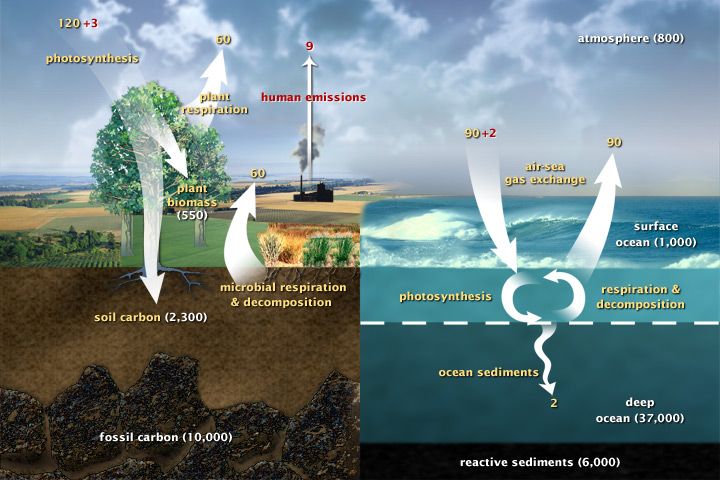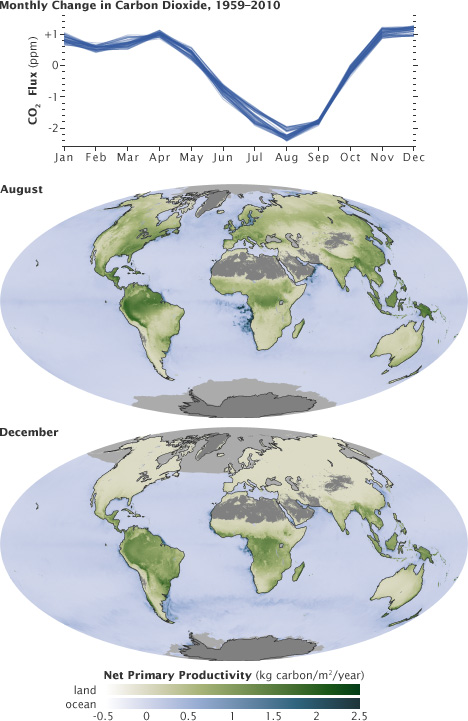Environmental Change and Management
Study Notes and Exam Tips for Adrian (68.89% in Geography) from Adrian (96.5% in Geography Elective)
Table of Contents
- Environmental Change and Management
Unfortunately my 2019 exam is all multiple choice sigh so cannot really excel and demonstrate my awesome writing skills. But hey, at least everyone else will do good!
Outcomes
A student:
GE5-2 explains processes and influences that form and transform places and environments
GE5-3 analyses the effect of interactions and connections between people, places and environments
GE5-4 accounts for perspectives of people and organisations on a range of geographical issues
GE5-5 assesses management strategies for places and environments for their sustainability
GE5-7 acquires and processes geographical information by selecting and using appropriate and relevant geographical tools for inquiry
GE5-8 communicates geographical information to a range of audiences using a variety of strategies
Key inquiry questions
- How do environments function?
- How do people’s worldviews affect their attitudes to and use of environments?
- What are the causes and consequences of change in environments and how can this change be managed?
- Why is an understanding of environmental processes and interconnections essential for sustainable management of environments?
Outcomes and key inquiry questions are from our friends at NESA.
Environment
- Environment: an interrelationship between living (biotic) and non-living (abiotic)
- Ecosystem: living organisms within a community and abiotic components of their environment
Food chain
Food chains and food webs consist of:
- Producers: convert sunlight into food (photosynthesis) – plants
- Consumers: eat other annimals or plants – animals
Scale in the environment
Revise on scale on The 7 Geographical Concepts.
- Individual organism
- Population – groups of plants or animals of the same species in one particular area
- Community - populations of different species interact with each other
- Ecosystem - interaction between communinty and its abiotic habitat
- Biome - defined by similar landscapes (climate, vegetation)
Habitats are preferred locations of organisms because it has the resources the organism needs to survive and thrive, such as water, temperature, minerals, sunlight, and other features.
Australia’s biomes

A vast majority of Australia is desert. Southeastern Australia (Tasmania, coastal Victoria, coastal NSW, Adelaide) is temperate and northern Australia is tropical/subtropical. Quensland tends to be less tropical than more northern parts such as Cape York and Darwin.
Environmental Processes
this will be fun
Water cycle
Evaporation –> condensation –> precipitation –> collection
Carbon cycle
Carbon Cycle on Earth Observatory
There are two carbon cycles: long term (geological) and short term (biological/physical).
Geological - long term
- Occurs over hundreds of millions of years
- Buildup of carbon in rocks/fossil fuels
- Moves between rocks, soil, ocean and atmosphere using chemical reactions and tectonic activity
1. Atmosphereic carbon + water –> carbonic acid
2. Atmosphere (carbonic acid in rain) –> Lithosphere (acid dissolves rocks)
3. Calcium, magnesium, potassium, or sodium ions released
4. Rvier carries ions to ocean
Biological/Physical - short term
- Occurs over days/weeks/months/years
- Cycling of carbon through photosynthesis and cellular metabolism
Carbon flows between atmosphere, land and atmopshere.

1. Carbon dioxide + water + energy –> sugar + oxygen (plants/phytoplanton photosynthesis)
2. Either
a) Plants break down sugars for energy
b) Animals eat plants/phytoplankton and break down sugars for energy
c) Plants/plankton die
d) Fire consumes plants *RIP*
3. Sugar + oxygen –> water + carbon dioxide + energy
4. Carbon ends up in the atmosphere again
In winter when less plants are growing and more plants are dying then carbon dioxide concentrations increase.

Monthly Change in Carbon Dioxide (Northern Hemi) 1959-2010
Oxygen cycle
Oxygen exists as oxygen gas (O₂) and ozone (O₃) as well as in compounds such as water (H₂O) and carbon dioxide (CO₂).

In the biosphere (worldwide sum of all ecosystems):
- Oxygen is released by photosynthesis
- Oxygen is absorbed by respiration (breathing organisms)
In the atmosphere:
- Oxygen is formed through UV light:
water –> oxygen + hydrogen– this process is photolysis - Oxygen is removed from the atmosphere through respiration (decay of organisms and weathering of rocks)
Ecosystem Services
Ecosystem services provide clean air, plant pollination and fertile soil. However, this is being threatened by human activity (e.g climate change). Ecosystem services are classified according to their products and functions.
Source
Natural products that are converted for use by humans (e.g coal)
Sinks
Natural processes that absorb waste (bacteria in the soil breaking down human waste)
Services
Natural environment that don’t produce consumeable resources (e.g forests absorbing carbon dioxide and producing oxygen)
Spirituality
Providing spiritual experiences (e.g Aboriginal connection with land)
Sustainability challenges
Sustainability is the ongoing capacity of the environment to support the lives of organisms. Using resources sustainably reduces the impacts humans have on the natural environment.
Fishing case study
Fish are a vital food source (15% of animal protein eaten by 3 billion people daily) and employment source (540 million people in fishing and aquaculure). However, fish levels are in serious decline and most fishing is unsustainable. Many species will not be able o recover. Fishing management is now occuring but it may be too late.
Worldviews
We all live in one world but we can differing views of varying degrees. Usually, we are either human-centric or earth-centric. The New Ecological Paradigm is an example of a measure of worldview.
Biodiversity
Biodiversity refers to the variety of living organisms on the planet. It is measured by number of species present in a particular ecosystem/region.
Biodiversity under threat
The loss of biodiversity impacts ecosystem services. Loss of biodiversity is caused by human activity:
- habitat change (e.g deforestation)
- overexploitation of resources (e.g fresh air)
- pollution (land, air, water)
- invasive species
- climate change
36% of species are threatened with extinction.
Case study: frogs
- Frog species numbers are in dramatic decline due to climate change
- Frogs are losing water through skin due to warmer climates
- Also they are losing breeding grounds
- The greatest threat is disease, as an African parasitic fungus (amphibian chytrid) is spreading and warmer temperatures is only helping
Climate change
Greenhouses gases such as carbon dioxide (caused by fossil fuel burning), methane (caused by livestock farming), nitrous oxide (caused by fertiliser) and flourinated gases (from fridges) is contributing to global warming. As a result, species and ecosystem services can be threatened. This is becasue climate change alters the conditions in which ecosystems develop, flourish, or decay.
Pollution
Pollution is any substance released into the environment that has harmful or poisnonus effects. They can impact the ability of the natural environment to provide ecosystem services.
Air pollution
Air polution is the contamination of the atmosphere, usually through the release of harmful gases. It can be local (e.g factory and smokestacks) but can also be large-scale pollution (e.g cities) that affect large areas
Water pollution
Water pollution is the contamination of water sources (rivers, lakes, oceans, etc) through the release of harmful substances. It can be caused by human activities near water (e.g shipping, oil drilling) or land acivities (littering, land clearing).

Land pollution
Land pollution is the contamination of land areas through the release of harmful substances. On a local scale, pollution can occur in forms such as soil contamination (e.g old petrol station sites) or on larger scales (e.g increasing salinity in the Murray-Darling Basin).
Land changes caused by human activity
Loss of productivity and decline in fertitlty due to human activities is called land degradation. It contributes to climate change and there are three types of land degradation.
- Soil degradation
- Loss of soil fertility
- Often caused by:
- large machinery/animals compacting soil
- becoming acidic
- loss of nutrients - Examples include salinity (buildup of salt)
- Soil erosion
- Soil gradually worn away
- Often caused by deforestation (as cleared land is more vulnerable to erosion than land with plants)
- Ecosystem decline
- Natural ecosystems become degraded through:
- loss of vegetation
- invasive species
- decline in water quality - Can lead to desertification - process of which become fertile land becomes desert
Soil degradation – salinity
Salt is a natural part of the environment. However, when the water table rises then more salt is brought up to the surface, which kills plants and turns freshwater into salt water.
Sometimes, irrigation can cause increased salinity as it increases the amount of water in the soil.
Ecosystem decline
Deforestation
- Land clearing occurs to provide for farmland
- Ecosystem services don’t have economic values so aren’t as valued as much
- As a result less oxygen is produced and natural habitats are threatened
Invasive species
- Groups of species that have been introduced in areas they are not native to are called invasive species
- Ecosystems around the world can be threatened by invasive species
- Sometimes invasive species are introduced deliberately, othertimes they are unintentional
- Invasive species can disrupt the balance of the eocsystem, degrade the land, and impact local populations
Water degradation
- Reduction in quality and quantity of clean fresh water
- Caused by use of water in homes, factories, agriculture, and infrastructure, as well as polution
- Dams disrupt the flow of water which floods some areas and drains others, which impacts ecosystem services (e.g fresh water provision, fertile soil, food production)
- Water pollution (contamination of rivers, lakes, oceans, etc) can cause people to lose access to safe and clean drinking water
- Animals can die and popuation numbers can decline
- Food sources are lost, and in some extreme cases this leads to food shortages
- Water pollution is the result of human activities…
- shipping
- fishing
- oil drilling
- and land activities…
- using fertilisers and pesticides
- littering
- clearing land
Case study: Murray-Darling Basin
In the Murray-Darling Basin, which accounts for 39% of Australia’s income (used for food exports), salinity is increasing and as a result plants and animals are dying. This is due to the capturing of rainwater in dams by farmers.
As a result, salt interception is being used to pump salty water and trap salt. Then, the salt is sold off for table salt.
Damn dams
There are many reasons to build dams, one being hydroelectricity. However, dams can cause significant environmental impact.

This marks the beginning of the Abbreviation Project. Basically, everything from now on has been cut down in order to get the main points required for a multiple choice exam!
Coastal Environments
- Continually changing due to natural and human activity
- Affected by human activity which causes coastal degradation
- Scale:
- Local: litter on a beach
- Regional: Oil spill
- Global: Rubber ducks being released into ocean
- Coastal degradation causes loss of plant/animal species
- Examples of coastal degradation:
- increase of sand in ocean
- changing the coastline (e.g human structures)
- toxic algae
Spatial variations
- Spatial variations are the differences between different locations.
- Natural factors:
- atmosphere - gas surrounding earth
- biosphere - living things on earth
- hydrosphere - water on earth
- lithosphere - outer rocky layer of earth
- Human factors
- Tourism
- Cleared vegetation
- Mining and roads
- Land reclamation
- Where coastlines are significantly altered by humans they are known as anthropogenic coasts
Climate change
Human activities such as land clearing and fossil fuel burning has caused more carbon dioxide to be present in the atmosphere. This results in global warming. Global warming affects coastlines and ecosystems, and as a result sea levels are rising which in turn causes:
- increased beach erosion
- increased flooding
- salt water entering freshwater sources
- increase in extreme weather events
Case study: Great Barrier Reef
The Great Barrier Reef (GBR) in Queensland contains a lot of coral. Rising sea temperatures will result in coral bleaching, and sea levels will rise. In addition, ocean acidification will occur where more carbon dioxide is in the water. This can reduce the amount of carbonate in the water that impacts the ability of animals to create shells.